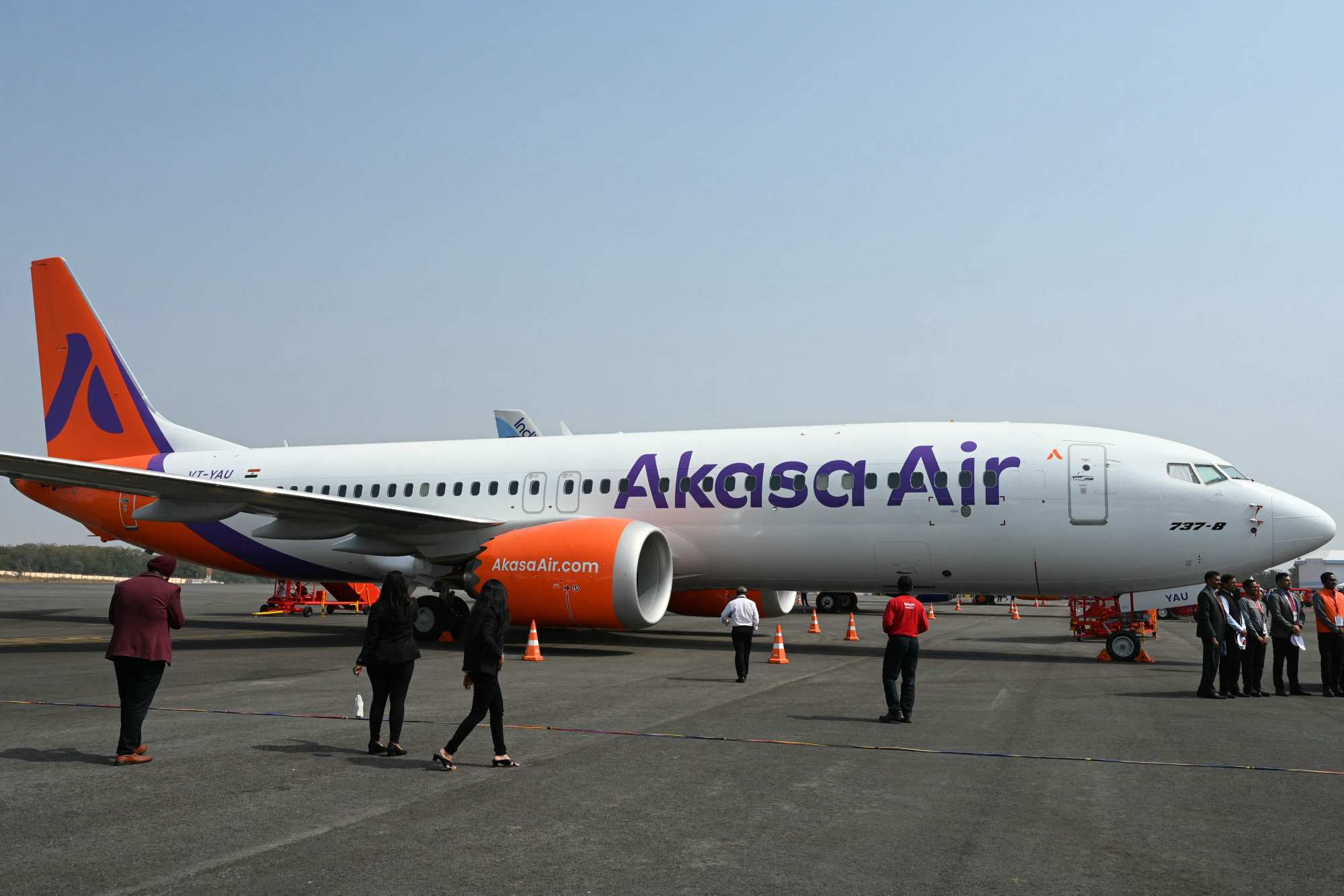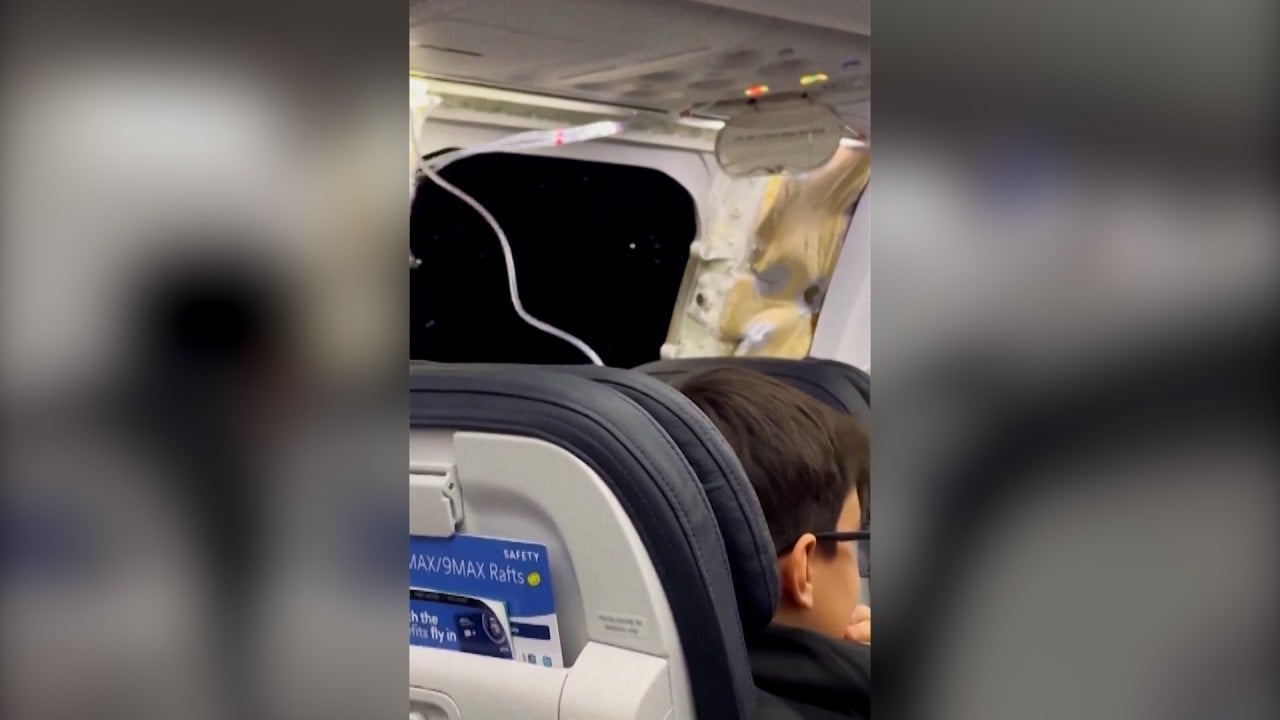
With Boeing 737 Max orders set for late arrival in Asia, will Airbus and China’s Comac benefit?
- Boeing’s ability to produce and deliver orders of its 737 Max series planes to Asia-Pacific clients is in doubt following a blowout incident in the US
- The expected delays could help rival Airbus consolidate its lead in the region and have stoked questions on whether Comac could ‘emerge as a player’
As aviation giant Boeing races to address defects plaguing its 737 model following a mid-air blowout in the US, expected delays in deliveries to its Asian clients could consolidate rival Airbus’ lead and open a window of opportunity for Chinese planemaker Comac, analysts said.
Following the blowout of the door plug, the US Federal Aviation Administration issued an Emergency Airworthiness Directive that required all 737 Max 9 aircraft to undergo further inspection, a process that is still ongoing.

While Boeing had few orders of the 737 Max 9 series from Asia-Pacific carriers, the incident was sowing uncertainty over the deliveries of related versions such as the Max 8 series, which would likely have to go through more stringent tests in the coming weeks, according to Mayur Patel, head of Asia at OAG Aviation.
As of this year, there were some three dozen firms in the region operating 211 Boeing 737 Max aircraft, with most of them flying a version of the Max 8 series, he told This Week in Asia. Twenty-one of the operators were in Northeast Asia, while there were six in Southeast Asia, four in South Asia and three in the Southwest Pacific.
Airbus had a 55.4 per cent market share in the Asia-Pacific and Boeing had 31.6 per cent, according to Patel. “If you look at the current split, it’s very obvious that Airbus takes the lead,” he said.
Boeing CEO admits Alaska Airlines incident ‘our mistake’
Following the blowout, Indonesia’s Ministry of Transportation grounded the country’s Lion Air Boeing 737 Max 9 aircraft, but the airline passed mandatory inspections and was cleared to fly its three aircraft on January 19.
Lion Air has mid-cabin emergency exits on its aircraft as opposed to Alaska’s plug door which is towards the back door, Patel said.
United Airlines inspections on the 737 Max 9 series last month found that several loose bolts were used to hold the door plug of the aircraft, raising concerns about Boeing’s quality control system.
Boeing has increased the frequency of quality checks during the manufacturing process and made other changes to its Quality Management System.

India’s newest airline, Akasa Air, announced last month it was buying 150 Boeing 737 Max aircraft in the first major order for the troubled planemaker since the dramatic Alaska Airlines incident.
Akasa placed orders for the 737 Max 10 and 737 Max 8-200 versions, but not Max 9 planes, which have been grounded by US regulators since the in-flight blowout. Boeing said Akasa Air’s order was finalised in December.
The first delivery of the planes is due in three years amid supply-chain issues that have bogged aircraft-makers since Covid-19 broke out five years ago. The Boeing 737 Max 10 model is still under certification and has not been rolled out yet, Patel said.
“Airlines in Asia, as well as those globally who have Boeing 737 orders, are likely to be impacted” because of production curbs, said Shantanu Gangakhedkar, a senior consultant in aerospace and defence at Frost & Sullivan.
US grounded Boeing 737 MAX jets, what airlines, regulators followed suit?
Rob Morris, global head of consultancy Cirium Asced, said the firm may have to revise its forecast of Boeing delivering 690 commercial aircraft by 2025, depending on the duration of output curbs on the 737 Max.
The aircraft-maker had been expected to raise its monthly production from 38 per month currently to 48 by end-2024, he said.
Another analyst, however, said Asian carriers were less likely to feel an impact than their US or European counterparts.
“Asian carriers are unlikely to be badly affected as many operate the 737 Max 8 variant, not the 737-9 type that’s been in the limelight for the past few weeks,” said Shukor Yusof, founder and analyst at Endau Analytics.
China’s opportunity?
Boeing’s door plug incident may kindle interest in Chinese planemaker Comac’s jets, but the opportunity is likely to be over the long term because aircraft orders are placed years in advance, Patel said.
“The one to watch out for is Comac,” Patel said. “The thing with the industry is it’s a 20- to 30-year cycle. So you never know. Comac may emerge as a player in that period.”
The planemaker would have to overcome a couple of hurdles, including attaining international certification instead of being only certified in China, while a number of its parts such as the engine and avionics are imported from the West, Patel said.

On the other hand, Morris said there would be little opportunity for either Comac or Airbus to capitalise on the Boeing incident.
“The production gap created by this issue is likely to be short term,” he said, explaining that large aircraft manufacturing required lead times of up to 18 months for single-aisle planes.
“The C919 order book is almost exclusively for customers in China. The export market remains wary of the C919 [and ARJ21] at present,” Morris said. He added that the airline’s customer support services and aircraft performance were also unproven.
As of this month, Comac has delivered four C919 aircraft to its first customer, China Eastern Airlines. Three of them have been deployed to service routes from Shanghai to the southwestern metropolis of Chengdu in Sichuan province, after its maiden commercial flight in late May.
The domestically developed C919 airliner is designed to carry between 140 and 210 passengers, and aims to directly compete with Boeing’s 737 and Airbus’ A320.
Additional reporting by Su-Lin Tan


